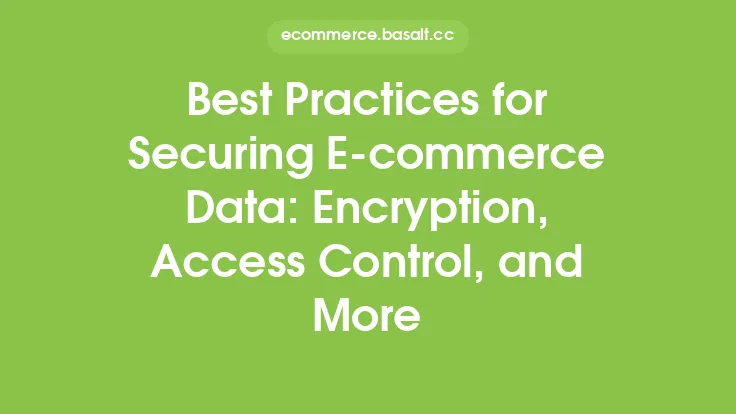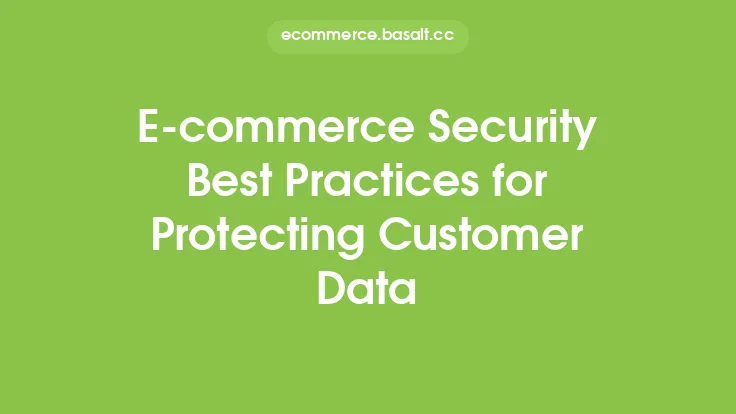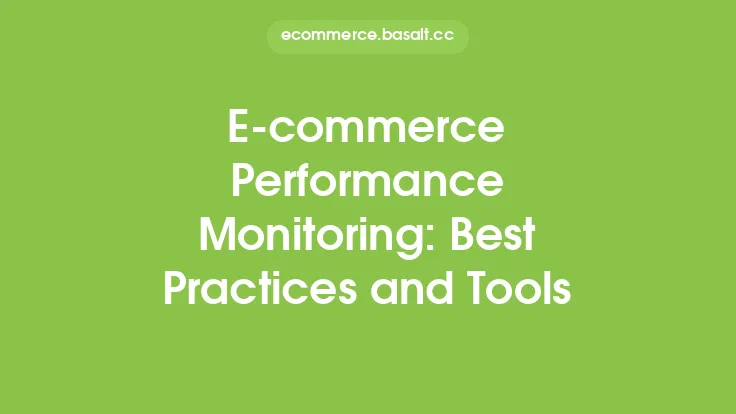Securing e-commerce passwords and user data is a critical aspect of maintaining a safe and trustworthy online shopping environment. As e-commerce continues to grow and evolve, the importance of protecting sensitive user information has never been more pressing. In this article, we will delve into the best practices for securing e-commerce passwords and user data, providing online store owners and managers with the knowledge and tools needed to safeguard their customers' personal and financial information.
Introduction to Password Security
Password security is a fundamental component of e-commerce security. A strong password policy can help prevent unauthorized access to user accounts, protecting sensitive information such as names, addresses, and credit card numbers. To ensure password security, e-commerce websites should implement the following best practices:
- Require strong and unique passwords: Passwords should be at least 12 characters long and include a combination of uppercase and lowercase letters, numbers, and special characters.
- Implement password hashing and salting: Passwords should be stored securely using a hashing algorithm, such as bcrypt or Argon2, and a salt value to prevent rainbow table attacks.
- Use a secure password reset process: The password reset process should be secure and require users to verify their identity before resetting their password.
- Limit login attempts: E-commerce websites should limit the number of login attempts to prevent brute-force attacks.
Protecting User Data
Protecting user data is critical to maintaining customer trust and preventing data breaches. E-commerce websites should implement the following best practices to protect user data:
- Use encryption: Sensitive user data, such as credit card numbers and personal identifiable information, should be encrypted using a secure encryption algorithm, such as TLS or AES.
- Implement access controls: Access to user data should be restricted to authorized personnel only, using techniques such as role-based access control and multi-factor authentication.
- Use secure protocols for data transfer: E-commerce websites should use secure protocols, such as HTTPS, to transfer user data between the website and the user's browser.
- Regularly update and patch software: E-commerce websites should regularly update and patch software to prevent vulnerabilities and ensure the security of user data.
Secure Data Storage
Secure data storage is essential to protecting user data and preventing data breaches. E-commerce websites should implement the following best practices for secure data storage:
- Use a secure database: E-commerce websites should use a secure database, such as a relational database or a NoSQL database, to store user data.
- Implement data backups: E-commerce websites should implement regular data backups to prevent data loss in the event of a disaster or data breach.
- Use secure data storage protocols: E-commerce websites should use secure data storage protocols, such as encryption and access controls, to protect user data.
- Limit data retention: E-commerce websites should limit data retention to the minimum required for business purposes, reducing the risk of data breaches and unauthorized access.
Compliance with Security Standards
Compliance with security standards, such as PCI-DSS and GDPR, is essential to maintaining a secure e-commerce environment. E-commerce websites should implement the following best practices to ensure compliance with security standards:
- Conduct regular security audits: E-commerce websites should conduct regular security audits to identify vulnerabilities and ensure compliance with security standards.
- Implement security policies and procedures: E-commerce websites should implement security policies and procedures, such as incident response plans and security awareness training, to ensure compliance with security standards.
- Use compliant payment gateways: E-commerce websites should use compliant payment gateways, such as PayPal or Stripe, to process payments and ensure compliance with security standards.
- Provide transparency and disclosure: E-commerce websites should provide transparency and disclosure, such as privacy policies and terms of service, to ensure compliance with security standards and maintain customer trust.
Best Practices for Password Management
Best practices for password management are essential to maintaining a secure e-commerce environment. E-commerce websites should implement the following best practices for password management:
- Use a password manager: E-commerce websites should use a password manager, such as LastPass or 1Password, to securely store and generate passwords.
- Implement password rotation: E-commerce websites should implement password rotation, requiring users to change their passwords regularly, to prevent unauthorized access.
- Use multi-factor authentication: E-commerce websites should use multi-factor authentication, such as two-factor authentication or biometric authentication, to provide an additional layer of security.
- Provide password security guidance: E-commerce websites should provide password security guidance, such as password strength meters and security tips, to help users create and manage strong passwords.
Conclusion
Securing e-commerce passwords and user data is a critical aspect of maintaining a safe and trustworthy online shopping environment. By implementing best practices, such as strong password policies, secure data storage, and compliance with security standards, e-commerce websites can protect sensitive user information and prevent data breaches. Additionally, by providing transparency and disclosure, e-commerce websites can maintain customer trust and ensure a secure online shopping experience. By following these best practices, e-commerce websites can ensure the security and integrity of their customers' personal and financial information, providing a safe and trustworthy online shopping environment.





